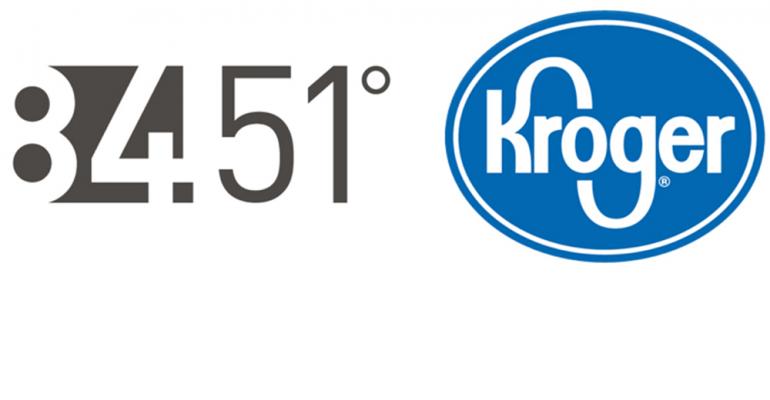Choosing facts over intuition was the theme during Kroger EVP and CIO Chris Hjelm’s appearance at the U.S. Chamber of Commerce’s Farm to Table: A Tech Story event on Friday in Washington D.C.
Flanked by Stuart Aiken, CEO of Kroger’s analytics division known as 84.51°, Hjelm discussed the modern shopping experience and how technological advancement generates the data necessary to stay on top of the market.
“Our goal is to make more and more decisions that are data based versus instinct based,” Hjelm said before pointing to a problem that had plagued the industry for years.
“Probably five or six years ago, we had this issue with consistency of temperature in refrigerators and frozen cases,” he said.
When tracked manually, it was difficult for stores to maintain proper temperatures for all cold products around the clock. When temperatures rose or dropped too far, management might not find out about the fluctuation until it was too late too avoid shrinkage.
Kroger’s turned to the internet of things (IoT), which is the interconnection via the internet of computing devices embedded in everyday objects, enabling them to send and receive data.
Using this tech, cold storage areas and cases report their status digitally and in real time via temperature tags placed with the items. When temperatures are not ideal, onsite managers and other employees can be alerted immediately.
“Our associates that used to have to run around and check temperatures on thermometers don’t have to do that any more,” Hjelm said. “When there is a problem, we are notifying store management so they can fix it before there is an issue with food safety.”
Kroger’s utilizes emerging tech in a variety of other ways, but across each method the goal remains data collection.
Enter 84.51, the Cincinnati based data collection arm of Kroger that utilizes technology to determine “what customers are looking for” at its nearly 3,000 locations.
Outfitted with infrared technology and video analytics, 84.51 helps Kroger learn exactly what time of day customers enter a store, who they enter with (is it a single person or a family of 10), and how long it takes them to conduct their shopping.
With this data, stores can make more informed management decisions such as how to properly staff the front end or how to deploy associates to address problems in an efficient manner. Hjelm describes it as finding the “pattern of that store,” so that customers can enjoy what Aiken calls a “truly seamless experience.”
When used efficiently, Hjelm says that customers are not aware of the adjustments that the store is making; they just experience an increased level of service.
Aiken stressed that the key to maximizing the value of recorded data is to view customers over a long progression as opposed to making snap decisions. He pointed out that a one-time purchase is not always an indicator of what a client is likely to buy the next time they head to the grocery store.
Referencing purchasing items online and how websites make suggestions at or immediately following checkout based on what is in the current cart, Aiken said that if a product is being bought as a gift, the buyer likely doesn’t care about comparable offerings.
A similar level of detail goes into how Kroger analyzes the value of keeping a product line on its shelves.
Hjelm and Aiken referenced an algorithm that the store uses to determine which products can be substituted for another.
Using an instance such as a new, popular line of butter being pitched to Kroger, Aiken said that the company would need to decide which current butter offering they would cut to accommodate the incoming addition.
The standard method would involve simply removing the brand or product line that was performing the weakest.
“What if that last butter was Kosher butter?” Aiken said. “I didn’t lose the sales and profitability of that item, I lost that customer.”
The pair claims that 84.51’s analysis does not neglect such details.
As for the future, Hjelm mentioned that Kroger has been testing shelf-mounted video boards in some stores. The boards bring both clearer warnings about the potential allergy risks of products stocked behind them and the ability to infuse gamification with the shopping experience.
Hjelm discussed the ability to list items in promotions where discounts would be in place until a certain number sold and thus being able to tease the customer by showing them the amount remaining before savings evaporated in real time.
“How do we optimize the supply chain,” said Hjelm, adding this to the areas that the company plans to update. “Whether it’s autonomous vehicles or drones, the way things will get to consumers is going to change a lot.”
The Farm to Table: A Tech Story event served as the launch of the U.S. Chamber of Commerce’s new TecExec Series.





